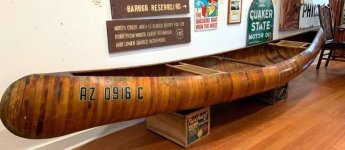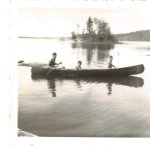This old canoe appears to have it's wood strips arranged 90 degrees off the norm. How can this be strong?
https://phoenix.craigslist.org/nph/a...155730235.html
https://phoenix.craigslist.org/nph/a...155730235.html
You might be on to something there. Maybe it once had an outer skin which has been peeled away by a previous owner. I don't see outwalls on it, so maybe the outer skin is gone.





